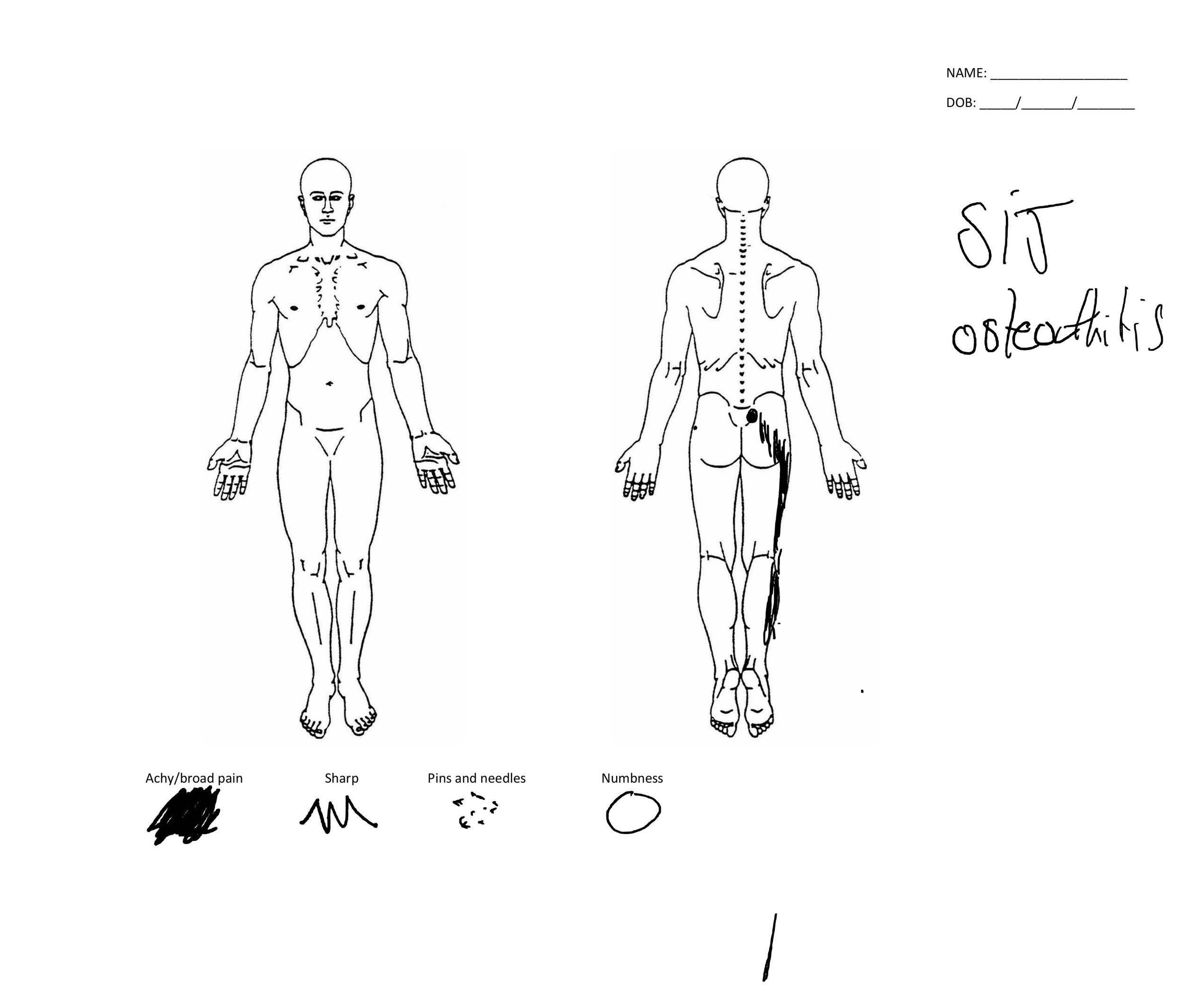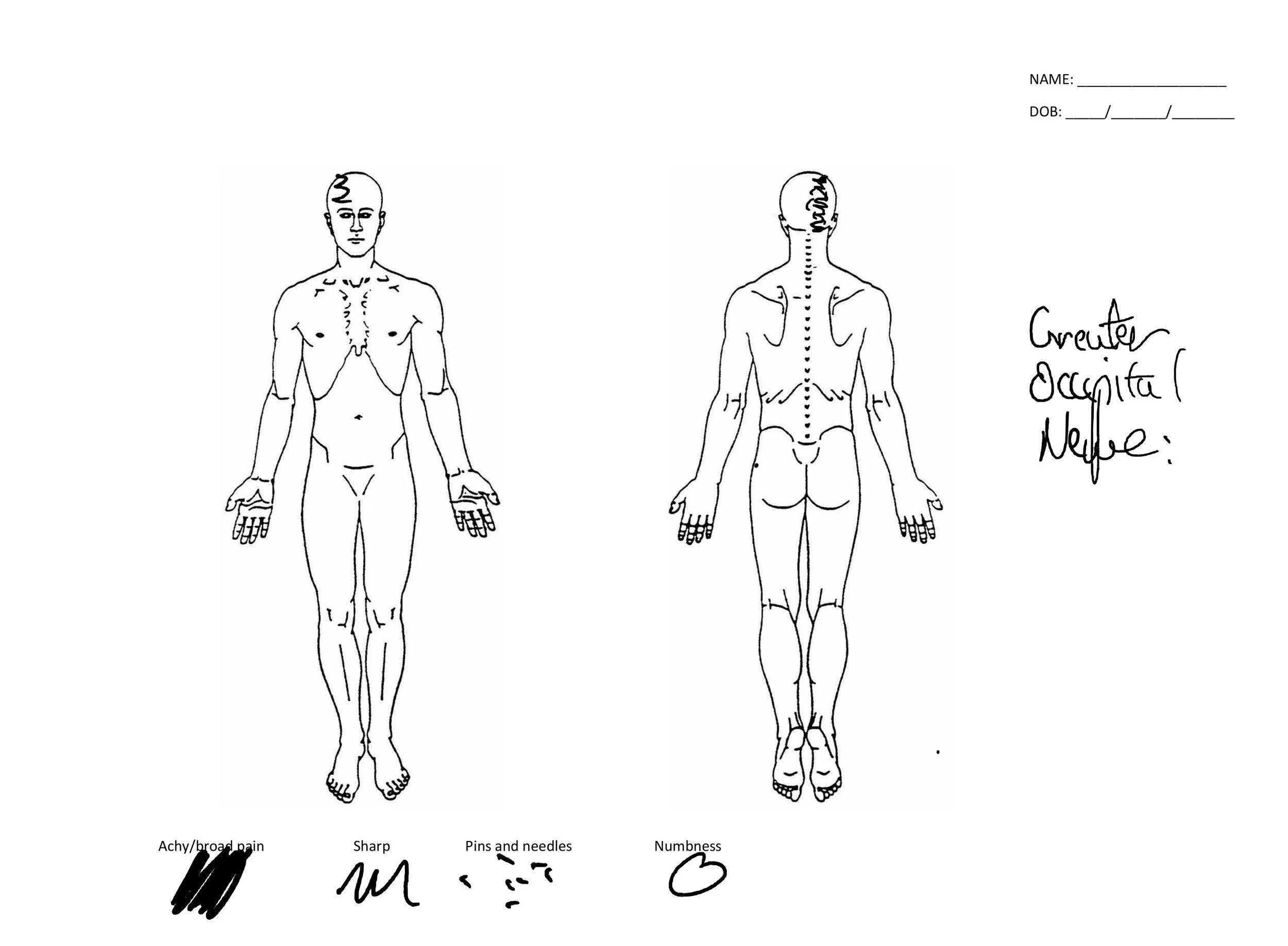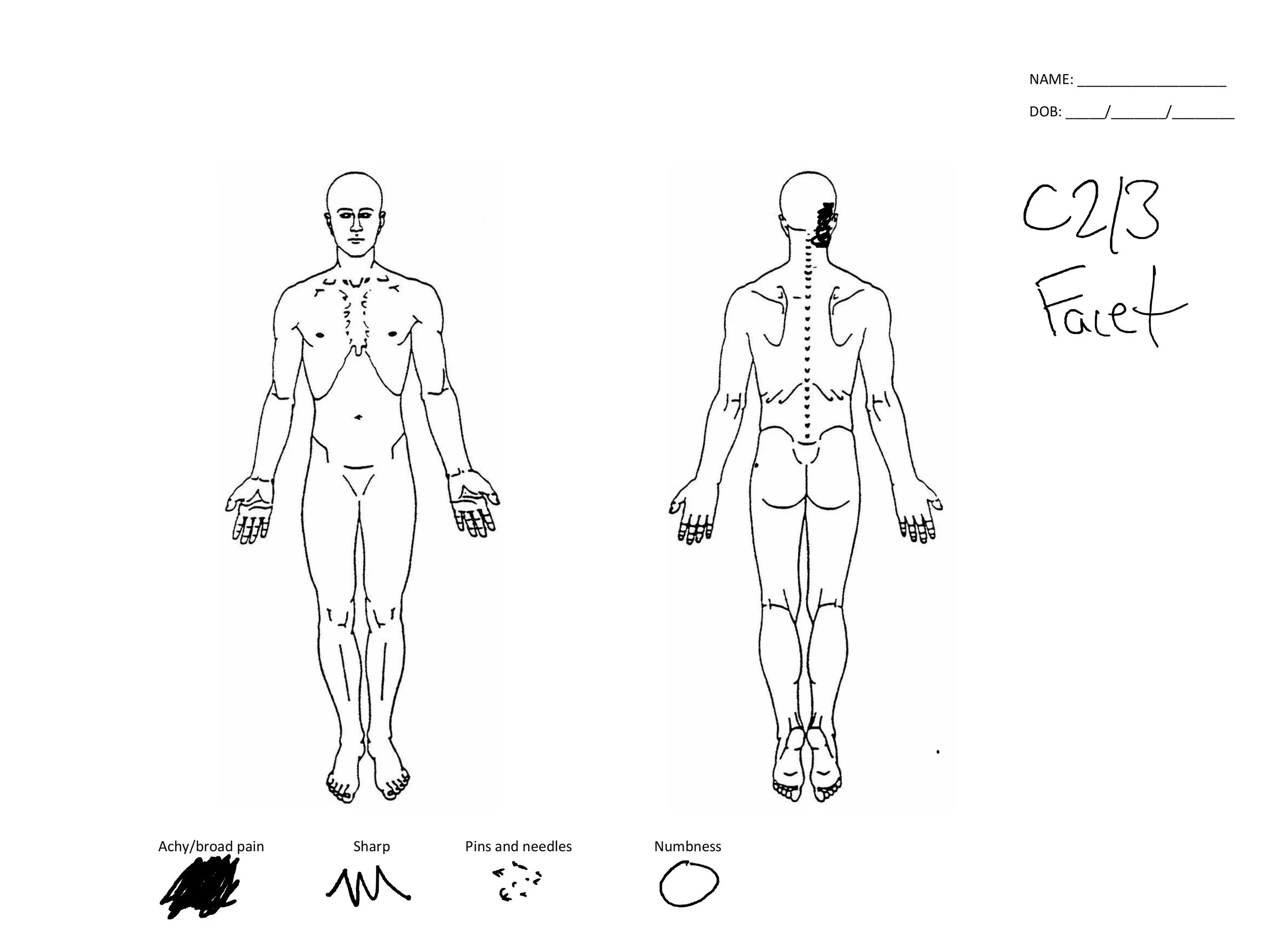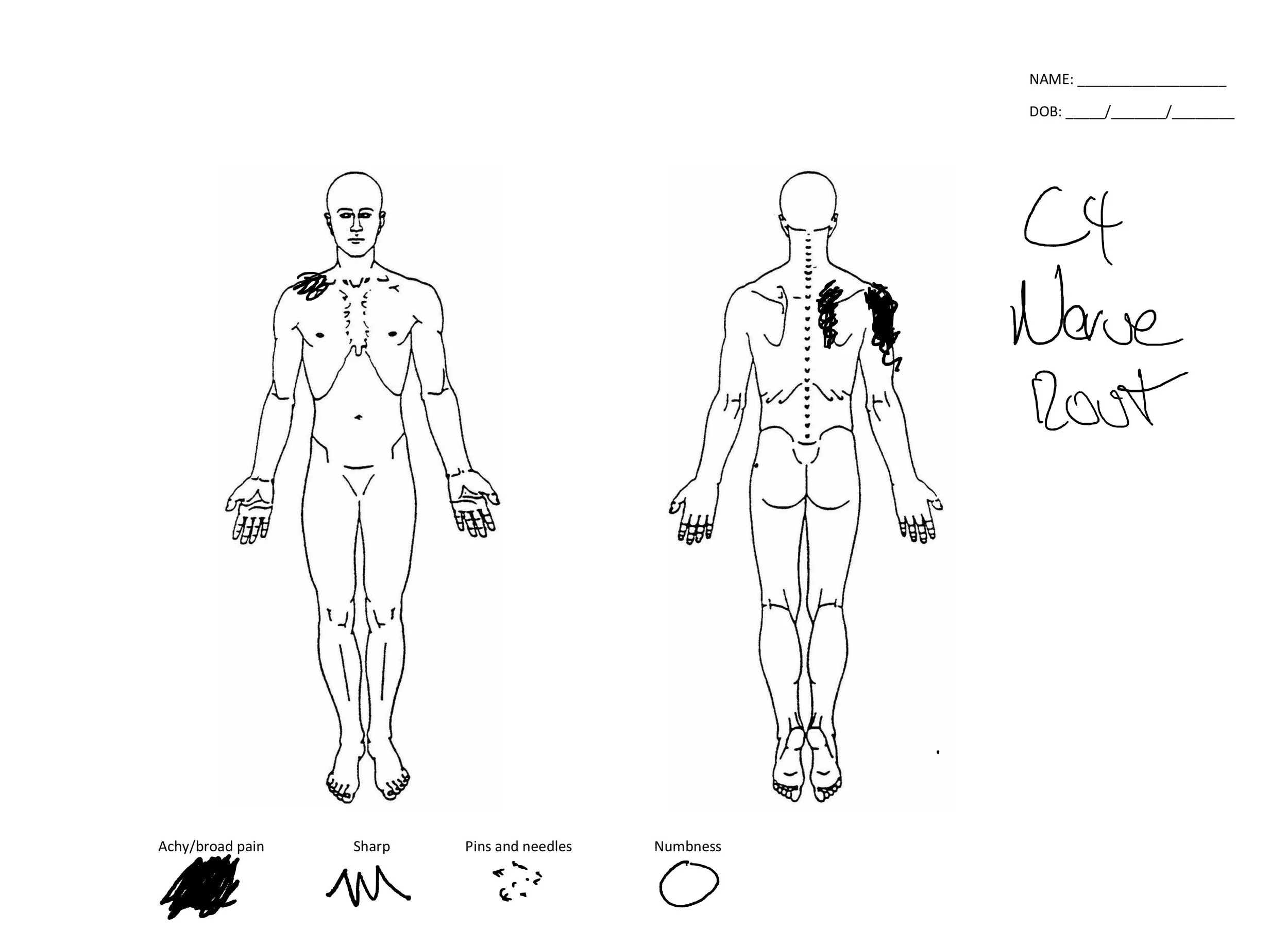PAIN PATTERNS
Pain has patterns if you know what to look for. On this page, you’ll find a collection of common pain patterns, illustrated through patient-drawn diagrams. These visuals reveal likely sources of pain, whether it’s nerve root irritation, facet involvement, peripheral nerve entrapment, or more complex nociplastic presentations.
When I ask a patient to draw their pain, it’s a starting point for understanding what’s really going on. Two minutes into a consult, a well-drawn diagram can show whether pain is nociceptive, neuropathic, or nociplastic, and guide the next steps in assessment and treatment.
This page collects those patterns, along with descriptions, so you can:
Quickly identify likely sources of pain
Understand how different nerves and structures present
Use patient-drawn diagrams as a structured diagnostic tool
Whether it’s your first time seeing a patient or your eighteenth, recognising these patterns matters.
Explore the diagrams below and use them to inform your assessment and decision-making.








































Want a deeper dive into using pain diagrams in practice?
In episode 16 of It’s Not In Your Head podcast, “Assessing Pain: How to Draw It (Part 1)”, Justine and I explore:
Why patient-drawn diagrams are crucial for diagnosis
How to use symbols and keys for different pain types
Techniques to confirm and refine the drawing during a consult
Common pain patterns for back, neck, and limb pain
How to interpret pain in the context of nociceptive, neuropathic, and nociplastic mechanisms
Whether you’re a clinician or patient, this episode shows how turning invisible pain into a visible diagram can guide assessment, improve communication, and inform treatment.

